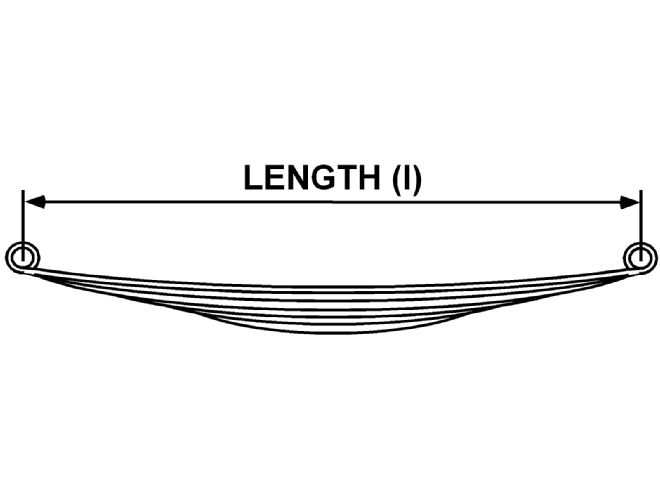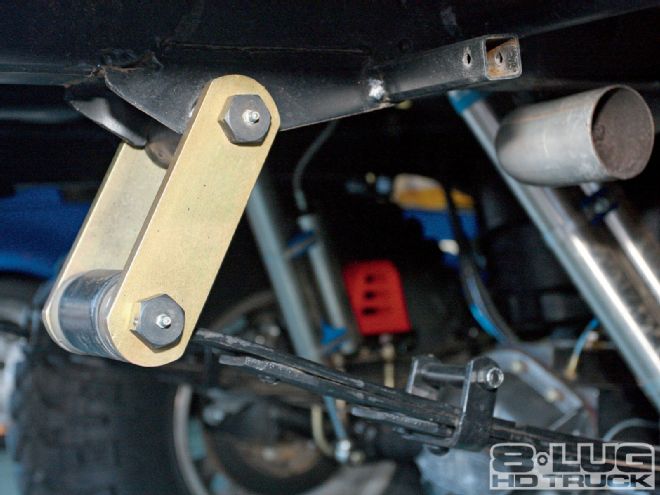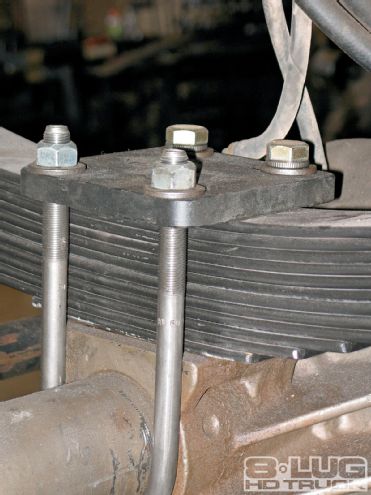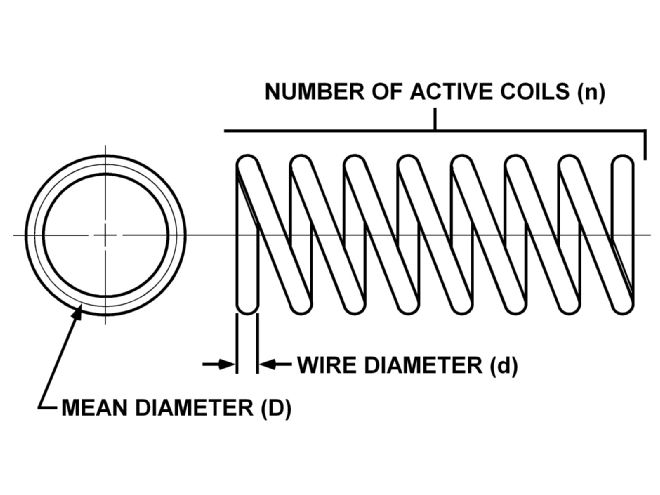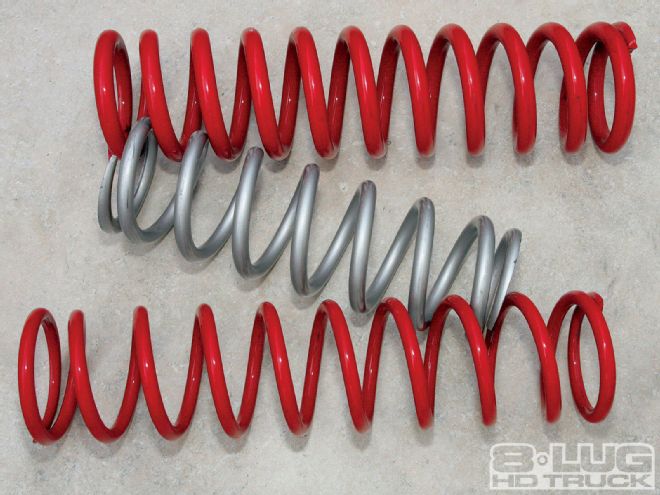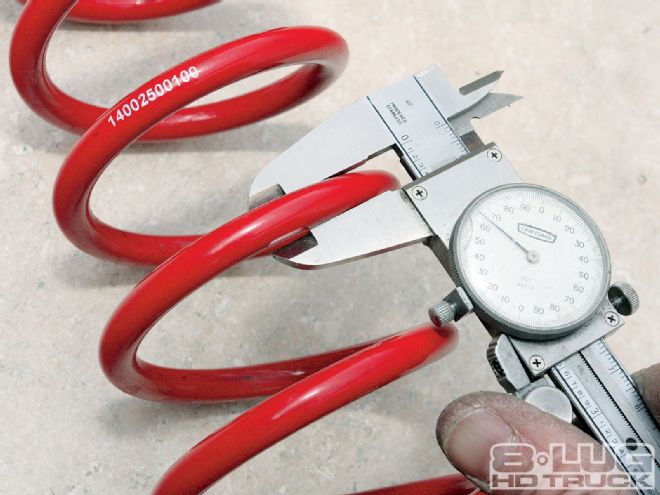Suspension handling is always a compromise between a good ride and good performance. Today's systems can provide both, but a little understanding of what factors affect spring rate can help you optimize spring performance for your particular application-be it a high-speed desert racer or slow-speed rough-terrain crawler.

| spring Rate coil Springs
A softer spring will allow the suspension to move more with less force applied. This is great for rockcrawling but may be too flexy for mud bogging, or too light if you're into jumping your rig. A stiff spring may help the truck corner flat on the street but may be really choppy on speed bumps or whoops.
Spring rate is specified in pounds per inch. This number defines the weight or force required to compress the spring through its first inch of travel. While this may seem like a fairly straightforward way of defining spring specs, not all suspension companies publish their spring rates.
Coils differ from leaf packs in several ways. Leaf packs always have some amount of inter-leaf friction that provides some self-dampening to the suspension. Coils have no such significant friction, and heavier damped shocks are required to prevent oscillation of a coil spring suspension. Coils, by themselves, are also considerably lighter than equivalent leaf springs, but they require more suspension components (links) for axle location and control.

| spring Rate leaf Springs
Leaf packs are often progressive to some extent. In other words, as the spring is compressed, the spring rate increases. This serves to help prevent bottoming of the suspension. Coils, however, generally have the same spring rate throughout their range of travel. There are some progressive-rate coil springs, but they are not as common as constant-rate spring coils.
We'll look at leaf springs, coil springs, coilovers, air shocks, and torsion bars and discuss the factors that affect the spring rate of each.
Leaf Springs
There are four physical dimensions that can affect the spring rate of a leaf pack: number of leaves, leaf length, leaf width, and leaf thickness. The table below shows the effect that increasing each of these dimensions has on the spring rate of the pack.
Dimension Increased - Effect on Rate
Number of Leaves - Higher
Leaf Length - Lower
Leaf Width - Higher
Leaf Thickness - Higher
The equation below can be used to estimate the spring rate of a given leaf spring pack:
Spring Rate = (E
x (2+nfull/ntot)
x ntot
x w
x t3)
/ (0.75
x l3)
ntot = total number of leaves
nfull = number of full length leaves
E = Young's modulus (29,900,000)
w = leaf spring width (inches)
t = leaf spring thickness per leaf (inches)
l = spring pack length (inches)
For example, let's calculate the spring rate for a leaf pack with five leaves, two of which are full-length leaves. Assume we have a 2.5-inch-wide spring with leaves that are each 0.230-inch thick. The eye-to-eye length is 45 inches.
Plugging these values into the equation above gives us a spring rate of about 160 lb-in. That means it would take approximately 160 pounds of force to compress this spring through its first inch of travel. From there, the spring rate will typically rise as more springs in the pack come into use. The equation can also help you compare leaf packs or help you decide the best way to modify a leaf pack to better suit your needs. With some understanding of the factors affecting spring rate, you can more accurately predict the final results.
For instance, note that the number of leaves in the spring pack affect the spring rate. Also note that the percentage of full-length leaves influence the result. A higher number of full-length leaves will increase the overall pack spring rate due to the fact that the ends of the spring pack become less flexible with the added longer leaves.
Another interesting fact is that while leaf width affects the spring rate, leaf thickness and length have a much greater effect on the stiffness of the pack. When making suspension modifications, leaf width and length changes may be hard to accommodate, but leaf thickness can be changed easily. A thick spring pack with many thin leaves may offer a softer ride than a pack with fewer leaves of greater thickness.
Shackles also play a part in determining spring rate in a leaf spring system. The closer the shackle is to vertical, the higher the effective spring rate. When the shackle lies back at an angle, it effectively becomes a moving link with the spring and the spring ride feels softer.
Leaf packs, by their nature, have friction between the leaves. This can cause the springs to ride roughly over small bumps because the spring must overcome the pack friction before it starts to flex. Teflon, or similar anti-friction pads, are now commonly used between the spring leaves to help reduce the friction and allow the leaves to slide smoother and with less force required.
Other factors can also raise the effective spring rate of your springs. Dry (ungreased) bushings can inhibit smooth movement of your spring and shackle assembly and the resulting bind can stiffen your suspension. Greasable shackles and spring pins can help cure this problem.
Coil Springs
There are three main physical dimensions that can affect the spring rate of a coil spring: coil wire diameter, coil spring mean diameter, and number of active coils. The table below shows the effect that increasing each of these dimensions has on the spring rate of the coil.
Dimension Increased - Effect on Rate
Wire Diameter - Higher
Mean Diameter - Lower
Number of Active Coils - Lower
The equation below can be used to estimate the spring rate of a coil spring:
Spring Rate = (G
x d4)
/ (8
x n
x D3)
G = Shear modulus (11,385,500)
d = coil wire diameter (inches)
n = number of active coils
D = mean coil diameter (inches)
For example, we can calculate the spring rate for a coil spring with a coil diameter of 0.625 inch, a mean diameter of 5 inches, and 10 active coils. Using the equation above gives us a spring rate of about 174 lb-in.
Shear modulus (G) is the same for all steel springs. It changes only when the spring material changes. Coil wire diameter (d) is a constant number, unless the spring is designed as a progressive spring using a varying spring wire size. For that case, this equation is no longer valid. Number of active coils (n) is the number of free coils (complete circle) free to move with the spring action. Mean coil diameter (D) is the distance through the centerline of the coil as shown above.
Using the equation can help you compare coil springs or help you design a set of custom coil springs. Note that coil height specifically does not affect the spring rate significantly-only the active number of coils does. Note also that coil spring rates remain nearly constant, even if the coil sags over time.
Coilover Shocks
Another form of spring assembly is that of a coilover shock, which is actually one or more stacked coil springs with a dampener shock inside. The spring function of this acts in the same way as a regular coil spring. However, coilovers typically provide more than one spring rate as the shock moves through its range of travel.

| For example, suppose we're using a 200 lb-in upper coil and a 300 lb-in lower coil. The initial effective spring rate would be 120 lb-in. Once the upper coil is stopped, the final spring rate would jump to 300 lb-in for the remaining distance of shock travel. By varying the rate of the two coils and adjusting the stop point of the upper coil, the shock can be dialed in to provide a soft ride over small bumps but then use the higher final spring rate to soak up the bigger hits and prevent bottoming. Additionally, nitrogen pressure is used in the shock body to provide another compressible medium.
Spring Rate = (Upper coil rate
x Lower coil rate)
/
(Upper coil rate
+ Lower coil rate)
For example, a dual rate coilover is one that has two springs stacked one atop the other. During the initial portion of the compressive shock travel, both springs compress. The effective spring rate is a combination of the two springs and is less than the rated value of either coil, based on this formula:
The lighter-rated coil will compress more as the suspension compresses, and a coilover has an adjustable stop ring that can be set to stop the compression movement of the upper (lighter-rate) spring. Once the upper coil is stopped (when the dual-rate slider hits the stop ring), the spring rate of the shock is simply the spring rate of the lower (higher-rated) coil.
Air Shocks
As with a coilover shock, a nitrogen-charged "air shock" can be used to provide both spring and dampening functions. These units look much like a fat hydraulic shock but incorporate beefier shafts and are charged with high-pressure nitrogen. Inside the shock, the oil and nitrogen are mixed together and move through internal orifices.

| The amount of nitrogen charge determines the effective spring rate, and the internal valving uses the oil to dampen the movement. The mixture is confined inside the shock. The oil is incompressible, but the nitrogen can be compressed as the shock is compressed. This nitrogen compression provides a fairly constant spring rate over perhaps the first two thirds of travel, but then the rate rises almost exponentially as the shock is compressed toward the end of its travel. Behavior can be tuned by changing the internal oil passage valving, the amount of oil in use, and/or the nitrogen charge pressure. More oil in the shock will cause the spring rate to rise faster and help prevent bottoming. Less oil will allow the shock to compress further before it starts to go to a hydraulic-lock condition. Nitrogen pressure can be adjusted to dial in the base spring force.
Torsion Bars
The equation below can be used to determine the spring rate of a torsion bar:

| These are the dimensions of a typical torsion bar.
Spring Rate = (G
x d4)
/ (584
x l)
G = Shear modulus (11,385,500)
d = bar diameter (inches)
l = bar length (inches)
For example, we can calculate the spring rate for a torsion bar with a diameter of 0.90 inch and an active length of 40 inches. Using the equation above gives us a spring rate of about 320 lb-in. While this may seem somewhat high, torsion bar systems typically work in a leverage system such that the effective spring rate at the tire is substantially less.
Similar to coil spring measurements, small changes in bar diameter can significantly affect the spring rate. Bar size should be precisely measured for accurate spring rate calculations.

| One point to note about torsion bars as used on an IFS system: The force from the tire acts through the lever distance of the A-arm to twist the torsion bar. Thus, a torsion bar spring rate is often relatively high to resist the force applied through this lever. When longer A-arms are installed to widen the track (greater lever distance), the torsion bar rate must be raised to retain the same effective front spring rate.
Using this knowledge of spring types and the equations given, you can make some estimates about spring rates for your vehicle. The effects of dimensional changes and spring modifications can be seen so that you can predict your results with some degree of accuracy.
